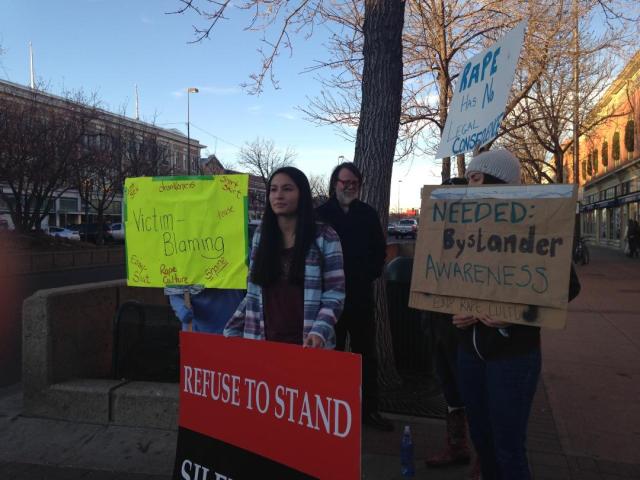
Protestors stand at the intersection of Mountain and College Ave. in Old Town Ft. Collins to fight against Rape Culture.
Photograph taken by Megan Fischer
Today –Monday December 8th – in Ft. Collins, the decision on the Andre Alders case was made, allowing an alleged rapist to walk free. In response to the decision, an immediate protest took place organized by a few people who had been following the trial and updating members via a Facebook group page. Also today, there were no protests on campus, or in Old Town, for #BlackLivesMatter. When the protests were on campus and trending as the thing to do last week for social justice minded folk, the turnout was significant. So where were these protestors today?
To be fair, this protest was organized fairly suddenly, and awareness about the case and events being protested were not very widespread. However, this is not the fault of the protestors or the protest organizers on the Facebook page, rather it is representative of the larger problem of rape culture. Either collectively we do not care about rape, or we are content with living in a society where rape goes largely unpunished, and as long as we don’t have to hear about it or get uncomfortable talking about it, we are content to let it keep happening. If you’re not making the connection, the institutional and societal acceptance of rape aligns almost perfectly with the institutional and systematic acceptance of unwarranted violence against black bodies.
This is not suggesting that one issue should be prioritized over the other, or that we should direct our focus toward the issue of Rape after we are all burnt out on Black Lives, but it is to bring awareness to the fact that right now there is a unique opportunity for coalition based directly upon the intersection of institutional injustice that bonds Rape culture and Black deaths. The issues of unwarranted black deaths and unpunished rape are problems where the institutions designed to bring justice and to protect and serve its citizens are failing.
Now, my last post called for people to take the next steps after protesting, however it seems that the fight against rape culture isn’t even being allowed to take the first steps. Rape culture is brought up as a concept in Women’s and Ethnic Studies classrooms, but not forced into a public space where we all have to come to terms with the fact that it surrounds us. When we do see Rape in the media, we see it on Law and Order: SVU as a highly stylized, dramatized, and surreal occurrence. Or we see coverage of Rape on a global scale, looking at how bad they are in India or Saudi Arabia, instead of how bad we are in our own communities. While the global media coverage is definitely full of merit, exposing the widespread injustice of rape culture permeating societies across the world, and while SVU attempts to tell stories that people would rather not have to think about, especially for entertainment, there is still always an aspect of rape that becomes a spectacle in these stories. The most mainstream stories are about graphic gang rapes in foreign lands, which become tales of consumption for people to say that when a woman has her drink spiked and has her body used without her consent, well, at least that’s not as bad as those evil gang rapists.
Even recently, when the accusations against Bill Cosby, one of the largest rape scandals that’s been discussed for years in feminist circles, but now comes to light due to a man briefly discussing it in a stand-up routine, the story is not about what happened to the women who were raped. The story is automatically about “Well, Bill Cosby was always an icon, such a good guy, I don’t believe he would’ve done this,” which leads only to the next logical point of blaming the victims, saying that they are just seeking media attention, that these accusations can’t be true. The women making the rape allegations are completely delegitimized, and the one who gets the most attention is the one who gives the most graphic verbal depiction of her rape, which becomes spectacle for the media and it’s consumers, re-broadcasting her words in fully graphic detail as some kind of sick and twisted perversion that takes her intended meaning and turns it into safe-for-air pornography.
We not only see this victim blaming and exploitation just in rape culture, but with the black bodies as well. Think back to beyond the two Grand Jury decisions, to earlier this year when Janay Rice was brutally attacked by Ray Rice in an elevator. Without her consent, that video was broadcast and shared, exploiting her image under the guise of bringing awareness. She did not give permission to share that video and share her traumatic experience, however she was made a martyr, and her body, or at least the image of its brutalization, was used without any question as to what she would have wanted. The video of Eric Garner has been shared in similar ways, however he is not alive to give consent, which maybe changes the meaning, and changes the way in which it can be consumed. Still the lasting discussion concerning Janay Rice became what did she do to deserve that, or that it was her and Ray Rice’s business, and with the Michael Brown and Eric Garner, the discussion gets narrowed down to asking what they did to antagonize the cops or questioning the legality of selling loose cigarettes, respectively, as if these acts were prompting their results. Either way, there is a trend here of bodies being exploited without consent, of bodies being blamed for the violence enacted upon them, and of a culture that seems to be collectively okay with all of it.
On a local scale, there have been a string of reported sexual assaults this year in Ft. Collins, and around campus. It took 11 reports before the school even spoke out about the assaults, and even then refused to take a definitive stance. The messages sent by the institution were more victim blaming, telling women what THEY could do to prevent being raped, as opposed to speaking to what steps men, or the entire community together, could take, to eradicate rape culture.
The group “End RAPE Culture Fort Collins” organized the protest today with little support, but they do not seem to be slowing down, and are planning more protests with more notice later this week. As opposed to being reduced to hashtag activism and gathering around with no goal besides collectively being upset, they are forcing protestors into a space to disrupt institutions allowing injustice to happen. Today they protested at the location in Old Town where the rape from the Alders case occurred. They were at the heart of the scene as a reminder that this happens in right in front of the Ft. Collins community’s face on a regular basis and goes unpunished. There seems to be organized leadership within the group with a goal in mind to take to task the businesses, the community, and the justice system who are participating in allowing rape culture to thrive. Hopefully the cause catches on, and one form of injustice is not favored during protests at the expense of another. Hopefully these two causes can combine forces, and substantial change can be made on a small scale within Ft. Collins that can pave the way for larger future change. If the emotion and momentum behind recent protests can remain, and these intersections can be made between all related issues of systemic injustice, the power and opportunity to take the next steps toward change will be in place. The all that will be left to do is put one foot in front of the other, and march in solidarity toward overturning a culture of racism and rape.

 When I first learned about “Big History,” which was the title that was designated to all of history since the big bang by an incredible professor who had given my 9th grade history class the challenge and privilege of what I consider now a college level course, I learned about the great paradox of agriculture. Basically, the idea is that 10,000 years ago when humanity invented agriculture, for many philosophical and technical reasons alike, it was simultaneously the greatest accomplishment in human history and the worst mistake humanity had ever made. What now allowed humanity to thrive and to excel technologically beyond any previous belief also secured human domination over nature, leading to great advances in quality of human life and longevity at the cost of nature’s well-being, and most likely the natural Earth itself.
When I first learned about “Big History,” which was the title that was designated to all of history since the big bang by an incredible professor who had given my 9th grade history class the challenge and privilege of what I consider now a college level course, I learned about the great paradox of agriculture. Basically, the idea is that 10,000 years ago when humanity invented agriculture, for many philosophical and technical reasons alike, it was simultaneously the greatest accomplishment in human history and the worst mistake humanity had ever made. What now allowed humanity to thrive and to excel technologically beyond any previous belief also secured human domination over nature, leading to great advances in quality of human life and longevity at the cost of nature’s well-being, and most likely the natural Earth itself. Illegal Pete’s is a restaurant with establishments in Boulder and Denver for over a decade, has come under fire from members of the Ft. Collins community recently for the use of the word “illegal” in their name. This has created somewhat of a PR shit-storm of back and forth debates and discussions between Pete (the owner) and people opposing the use of the name, both online and in public forums.
Illegal Pete’s is a restaurant with establishments in Boulder and Denver for over a decade, has come under fire from members of the Ft. Collins community recently for the use of the word “illegal” in their name. This has created somewhat of a PR shit-storm of back and forth debates and discussions between Pete (the owner) and people opposing the use of the name, both online and in public forums.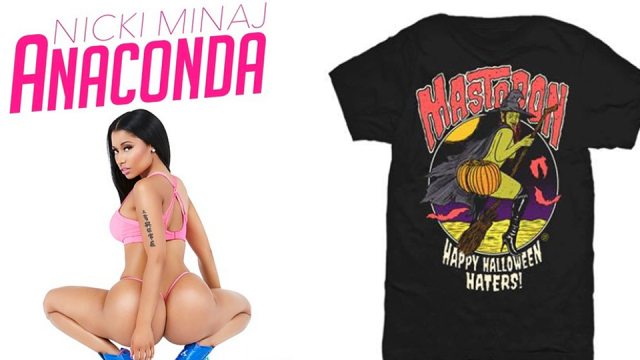
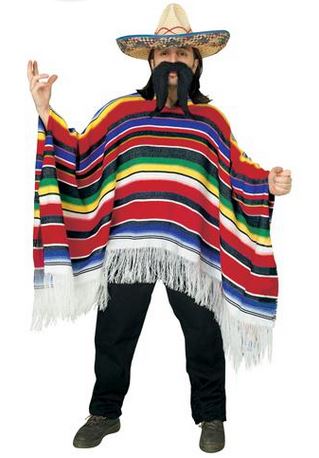
 So backtracking a little bit, the timely release of the independent film “Dear White People” directly dealt with the issue of appropriation. SPOILER ALERT. The climax of the film was a frat party, based off of numerous real parties that are displayed in the end credits, where white students get together in full black face, costumed as various “black” caricatures such as rappers and gangsters, in order to push back against black students who are protesting campus racism. In the climactic scene, much of the films “say more show less” style flips around, and the implications of what is happening are left to sit with the audience for contemplation. The only moment of the scene where a character directly articulates any kind of way to feel toward the audience is when CoCo says that for a night, the white people got what they wanted, which was to be black. Ultimately, the character is suggesting that appropriation happens because white people really just want to be black.
So backtracking a little bit, the timely release of the independent film “Dear White People” directly dealt with the issue of appropriation. SPOILER ALERT. The climax of the film was a frat party, based off of numerous real parties that are displayed in the end credits, where white students get together in full black face, costumed as various “black” caricatures such as rappers and gangsters, in order to push back against black students who are protesting campus racism. In the climactic scene, much of the films “say more show less” style flips around, and the implications of what is happening are left to sit with the audience for contemplation. The only moment of the scene where a character directly articulates any kind of way to feel toward the audience is when CoCo says that for a night, the white people got what they wanted, which was to be black. Ultimately, the character is suggesting that appropriation happens because white people really just want to be black.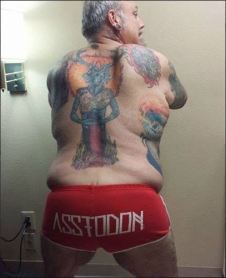
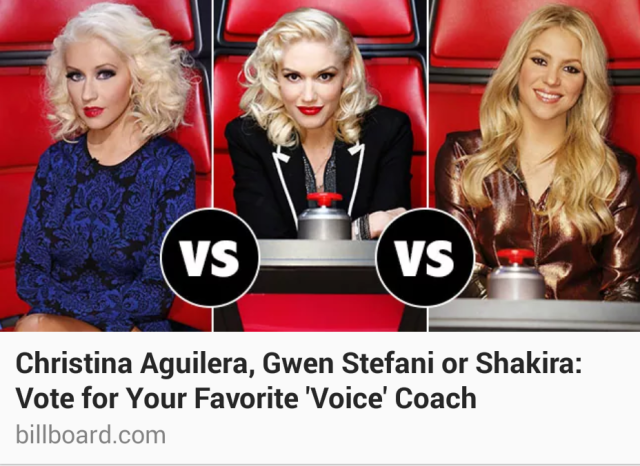
 The ideas of assimilation and beauty stem from the black and white body binary, where in order to be successful in the mainstream, or at the very least have an opportunity to try, women of color become as close as they can physically to the white ideal which has been force fed down our throats as what beauty looks like, attempting to get rid of the enlarged features of their bodies, that are used to identify black female bodies as an Other.
The ideas of assimilation and beauty stem from the black and white body binary, where in order to be successful in the mainstream, or at the very least have an opportunity to try, women of color become as close as they can physically to the white ideal which has been force fed down our throats as what beauty looks like, attempting to get rid of the enlarged features of their bodies, that are used to identify black female bodies as an Other.

 Black-Ish follows a trend started by the Cosby show of representing African Americans, and more specifically African American families, as intelligent, successful, and loving, as opposed to poor, or violent, or buffoons, in order to counter these images that saturated the media. When the Cosby show aired, the black families seen on TV were either in the Ghetto and needed white aid to get out, or had made it out of poverty but the fact they now co-mingled with rich or middle class white people was a punchline. Many images of African Americans still portrayed them as comedic buffoons on TV, re-presenting old images of minstrels or “Coons.” Cosby understood how harmful these images were and saw a necessity to provide images that suggested the opposite about African Americans to mainstream white audiences. The Cosby show was born out of the need for counter images, and was successful in that it created a legacy of shows that followed which shifted representations of blacks more toward Cosby-ish types instead of overtly racist stereotypes, at least until the mid to late 90’s where buffoonish characters started to reappear. The Cosby show also had the negative effect however, of creating the trend of what Sut Jhally calls “enlightened racism.” The images that the Cosby show and its successors produced started to turn into those of the “exceptional” blacks, who were nice and familiar, and most importantly non-threatening to whites. The images also started to form sentiments, to be internalized by both whites and some African Americans as well, that blacks who didn’t make it only had themselves to blame, despite the race and class issues that existed during the times. Heavy focus on the Huxtables’ (Cosby’s family) as the ideal black family framed any Black family who didn’t fit into their high class way of life as failures. During a time where the Reagan conservative political atmosphere and philosophy of “pull yourself up by your bootstraps” was hitting its peak, the Cosby show justified individualistic sentiments, ignoring societal inequalities. What was created by the Cosby show was a Catch-22 where positive representations of African Americans were needed, however they came at the cost of blaming non Cosby-ish African Americans for their own struggle, and ignoring the need for an overhaul of widespread institutional racism.
Black-Ish follows a trend started by the Cosby show of representing African Americans, and more specifically African American families, as intelligent, successful, and loving, as opposed to poor, or violent, or buffoons, in order to counter these images that saturated the media. When the Cosby show aired, the black families seen on TV were either in the Ghetto and needed white aid to get out, or had made it out of poverty but the fact they now co-mingled with rich or middle class white people was a punchline. Many images of African Americans still portrayed them as comedic buffoons on TV, re-presenting old images of minstrels or “Coons.” Cosby understood how harmful these images were and saw a necessity to provide images that suggested the opposite about African Americans to mainstream white audiences. The Cosby show was born out of the need for counter images, and was successful in that it created a legacy of shows that followed which shifted representations of blacks more toward Cosby-ish types instead of overtly racist stereotypes, at least until the mid to late 90’s where buffoonish characters started to reappear. The Cosby show also had the negative effect however, of creating the trend of what Sut Jhally calls “enlightened racism.” The images that the Cosby show and its successors produced started to turn into those of the “exceptional” blacks, who were nice and familiar, and most importantly non-threatening to whites. The images also started to form sentiments, to be internalized by both whites and some African Americans as well, that blacks who didn’t make it only had themselves to blame, despite the race and class issues that existed during the times. Heavy focus on the Huxtables’ (Cosby’s family) as the ideal black family framed any Black family who didn’t fit into their high class way of life as failures. During a time where the Reagan conservative political atmosphere and philosophy of “pull yourself up by your bootstraps” was hitting its peak, the Cosby show justified individualistic sentiments, ignoring societal inequalities. What was created by the Cosby show was a Catch-22 where positive representations of African Americans were needed, however they came at the cost of blaming non Cosby-ish African Americans for their own struggle, and ignoring the need for an overhaul of widespread institutional racism.
 The Dragon Woman is mysterious, she’s deceptive, she’s in a position of power which she executes in a brutal fashion, and she’s shady as hell. Mooney fits all of these descriptions, and for Christ’s sake, her lair is in Gotham’s China Town. So although GOTHAM breaks form so far by representing crimes in a non-typical manner, it is partially due to the fact that there are just not many black actors cast, and the biggest one that is cast is being characterized in a fashion usually reserved for Asian women. This could be positive in the way that applying a stereotype to someone it doesn’t apply to normally diversifies representation by showing no one group or people fit into that type, which in this instance is the Dragon Woman Type. It could also still be just as negative by portraying a woman of color in power as villainous and shifty, as well as continuing to reinforce the elements of the stereotype for further production.
The Dragon Woman is mysterious, she’s deceptive, she’s in a position of power which she executes in a brutal fashion, and she’s shady as hell. Mooney fits all of these descriptions, and for Christ’s sake, her lair is in Gotham’s China Town. So although GOTHAM breaks form so far by representing crimes in a non-typical manner, it is partially due to the fact that there are just not many black actors cast, and the biggest one that is cast is being characterized in a fashion usually reserved for Asian women. This could be positive in the way that applying a stereotype to someone it doesn’t apply to normally diversifies representation by showing no one group or people fit into that type, which in this instance is the Dragon Woman Type. It could also still be just as negative by portraying a woman of color in power as villainous and shifty, as well as continuing to reinforce the elements of the stereotype for further production.